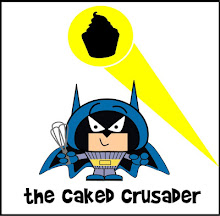As soon as I saw this recipe in the BBC Good Food Christmas magazine I knew it was what we’d be eating after Christmas lunch. If I was in a romcom, I could tell the BBC they had me at “trifle cheesecake”.
Christmas would be much more drab without sprinkles:
When you think about it, some cheesecakes already have a thick fruity layer on top but more of a set coulis than jelly. The jelly works really well and lightens the whole dessert. It was definitely a crowd pleaser.
I thought I had lined my tin pretty thoroughly, and also thought I had spread out the cheesecake layer to close off any holes. Wrong. That liquid jelly is a terror and I say this to prepare you for the likelihood of leakage. Take precautions in advance – lots of kitchen paper under the tin will prevent it looking like a jelly massacre took place shortly before you opened the fridge door. Also have a spare packet of jelly to make up for the jelly lost in leakage; it looks a bit weird if your raspberries are left poking out the top! (Not a sentence I ever thought I’d type)
Apologies for the poor quality photos; the light wasn’t great and, by this point in events, I had roast potato-fuelled inertia. In other words....a typical Christmas! Hope you all had a good one!
Ingredients
For the
base:
250g digestive biscuits
100g unsalted butter
100g unsalted butter
For the
cheesecake layer:
3 gelatine leaves
3 tablespoons Bird’s custard powder
200ml milk
100ml double cream
900g cream cheese – I used Philadelphia
200g golden caster sugar
1 teaspoon vanilla extract
3 tablespoons Bird’s custard powder
200ml milk
100ml double cream
900g cream cheese – I used Philadelphia
200g golden caster sugar
1 teaspoon vanilla extract
For the
jelly:
1 x 135g pack raspberry jelly cubes (You might want a spare
pack on standby, should you lose jelly to leakages – I did!)
175g raspberries
175g raspberries
For the
cream:
300ml double cream
Cadbury’s Flake
Sprinkles of your choice
Cadbury’s Flake
Sprinkles of your choice
Method
Line a 23cm round springform tin with foil or
clingfilm. It needs to be completely
lined. Also wrap the outside of the tin
with foil – because the chances are the jelly will leak! If you’re a pessimist (I am) then place some
kitchen paper under the tin inside the foil as it soaks up any leaks.
In a food processor blitz together the digestive biscuits
and butter (no need to melt) until it resembles wet sand.
Press the biscuits crumbs into the base of the prepared tin
and refrigerate.
Now make the custard for the cheesecake layer: place the
gelatine leaves into a bowl of cold water.
Put to one side.
Spoon the custard powder into a bowl.
Pour the milk and cream into a saucepan and then take three
or four tablespoons of this to stir into the custard powder and make a thick
paste.
Heat the milk and cream in the saucepan until almost at
boiling point.
Pour over the custard paste and stir to ensure no lumps.
Return to the saucepan and heat, stirring all the time,
until the custard thickens.
Remove from the heat.
Squeeze all the water from the gelatine leaves and whisk
into the warm custard.
Pour into a bowl and press clingfilm onto the surface to
stop a skin forming.
Leave to cool.
When it is cool, you can make the cheesecake layer: beat together
the cream cheese, sugar and vanilla until smooth and well combined.
Stir the custard to loosen it a bit, and then beat into the
cheesecake mix.
Spoon over the biscuit base and return to the refrigerator
for 4 hours.
Now make the jelly layer: Make half the packet of jelly and
leave, in the jug to cool for 30 minutes or so.
Pour over the cheesecake and place the raspberries in the
jelly. At this point, they won’t be
covered. There might be some jelly
leakage at this point but if you have prepared your tin adequately it shouldn’t
cause any fridge-carnage!
Refrigerate for an hour.
Make up the remaining half pack of jelly and pour over the raspberries.
Refrigerate for an hour or until the jelly is totally set.
Whip up the cream and pipe over the jelly on top of the
trifle.
Sprinkle over crushed Flake or almonds, or any sugar
decoration you have.
Remove from the refrigerator about 10 minutes before you
wish to serve.
Bask in the glory of the wonderful thing you have created.
Eat.





































